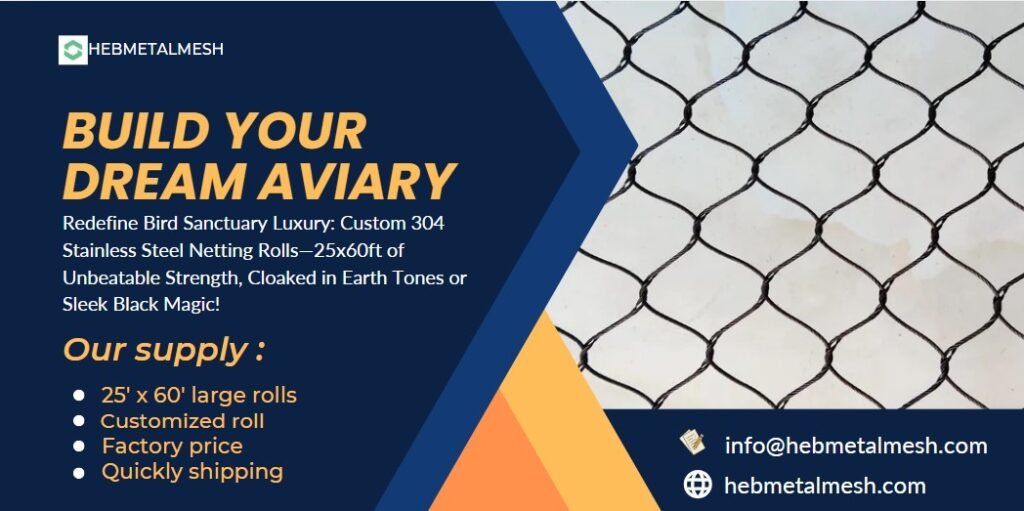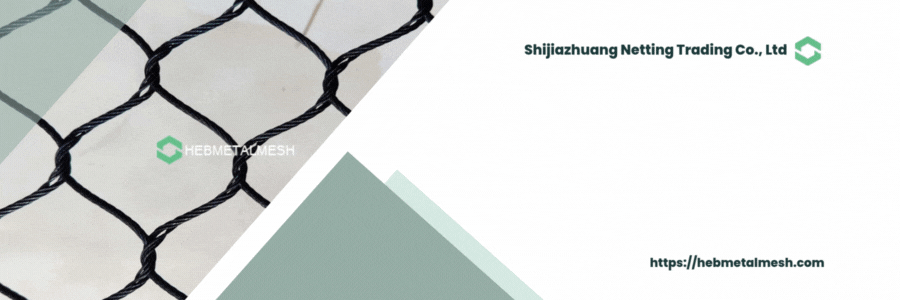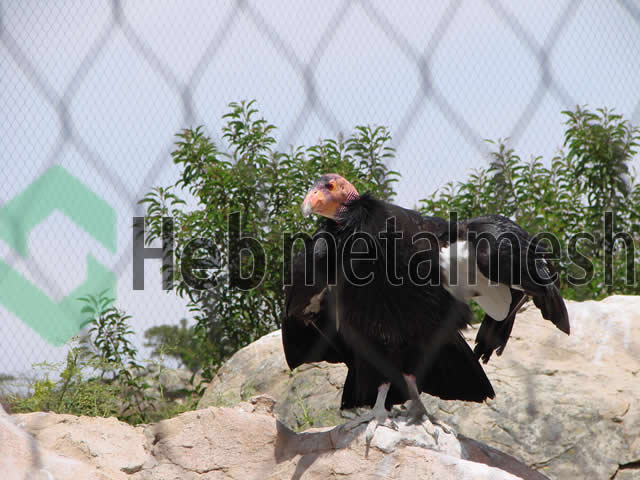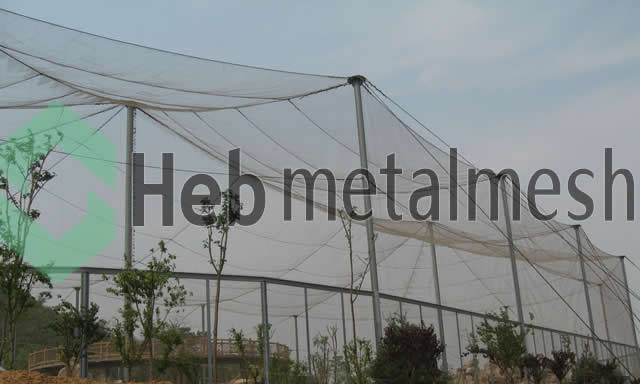Introduction to Bird Cage Netting
When it comes to constructing a large bird cage or a walk-in aviary, the significance of bird cage netting cannot be overstated. This crucial element plays a vital role in ensuring not only the safety of the birds but also their overall comfort and well-being. By selecting the appropriate netting material, aviary builders can create an environment that allows birds to thrive, promoting healthy behaviors and reducing stress.
Bird cage netting serves multiple purposes, from preventing predators from entering the enclosure to keeping the birds secure within their habitat. It also provides a physical barrier against the elements, ensuring that the birds are protected from harsh weather conditions while still allowing for ventilation and natural light. For anyone invested in the welfare of their feathered friends, incorporating sturdy and reliable netting is essential in the design and functionality of an aviary.
There are various materials available in the market for bird cage netting, each with distinct advantages and disadvantages. However, among these options, stainless steel netting stands out as the superior choice. Renowned for its durability and resistance to corrosion, stainless steel netting ensures a long-lasting solution that requires minimal maintenance. Additionally, its strong construction prevents birds from chewing through or damaging the netting, offering peace of mind to pet owners.
Furthermore, stainless steel’s non-toxic properties mean that it is a safe option, providing an ideal environment for birds of all sizes. It also offers excellent visibility, allowing bird lovers to observe their pets without obstruction. In the realm of bird cage netting, stainless steel not only meets practical needs but also enhances the aesthetic appeal of aviaries, creating inviting spaces for both birds and enthusiasts alike.
Why Choose Handwoven Stainless Steel Netting?

When it comes to selecting the right bird cage netting, one option stands out for its unrivaled qualities: handwoven stainless steel netting. This material is engineered not only for aesthetic appeal but also for practicality, making it an ideal choice for avian enthusiasts who prioritize safety and durability.
The foremost advantage of handwoven stainless steel netting is its exceptional durability. Unlike plastic or other synthetic alternatives, stainless steel is robust and can withstand significant wear and tear, ensuring that it remains intact even in high-stress environments. This strength is crucial for maintaining the safety and well-being of birds, as it effectively bars predators and prevents escape attempts.
Another significant benefit is its resistance to rust and corrosion. Traditional materials may deteriorate over time when exposed to moisture, leading to potential hazards for the birds within the cage. Handwoven stainless steel, however, has a natural resistance to the elements, ensuring that it maintains its integrity even in humid conditions. Such reliability not only safeguards your feathered friends but also reduces long-term maintenance efforts.
Moreover, the structural integrity provided by handwoven designs enhances the overall effectiveness of bird cage netting. The intricate weaving process contributes to a flexible yet strong network that can absorb impacts, thereby minimizing the risk of injury to birds during typical activities, such as flapping wings or playful interactions. This flexibility sets stainless steel netting apart from more rigid alternatives, allowing for a more lenient environment conducive to the well-being of the avian residents.
Overall, handwoven stainless steel netting combines the essential elements of strength, durability, and flexibility, making it a top-tier choice for any bird cage design. By opting for this type of netting, bird owners can provide a secure and comfortable habitat while enjoying peace of mind knowing their pets are protected from potential threats.
Understanding Stainless Steel 304: The Gold Standard for Bird Cages
When selecting materials for bird cage netting, stainless steel 304 stands out as the premium choice due to its unique composition and remarkable qualities. This high-grade stainless steel is an alloy primarily composed of iron, with significant amounts of chromium and nickel. The inclusion of chromium offers enhanced resistance to corrosion, while nickel contributes to overall strength and stability. These properties make stainless steel 304 particularly suitable for constructing durable, long-lasting bird cages that can withstand various environmental conditions.
The resilience of stainless steel 304 means it is less prone to rust and degradation, ensuring that bird cages maintain their integrity over time. Since birds are sensitive creatures, their well-being is paramount. Materials like stainless steel 304 not only provide a secure habitat but also minimize the risk of chemical leaching. Unlike other metals, stainless steel 304 does not react with the substances typically found in their habitats, ensuring that the air and environment remain safe for birds. This is particularly vital in preventing skin irritations and allergies that could arise from using inferior materials.
Choosing bird cage netting made from stainless steel 304 demonstrates a commitment to providing a safe, healthy living space for avian companions. Bird owners can rest assured knowing that their investment leads to a reliable and sturdy enclosure. Additionally, the aesthetic appeal of stainless steel is often associated with a clean, modern look that can easily blend into various settings, whether in a home or a public aviary. The strength and non-corrosive qualities of stainless steel 304 position it as the gold standard in the bird care industry, providing peace of mind for bird lovers dedicated to their pets’ health and happiness.
Choosing the Right Color: Natural vs Black Oxide
When selecting bird cage netting, the choice of color plays a crucial role in both aesthetics and functionality. Two popular options in the market are natural and black oxide finishes, each bringing its unique advantages to an aviary setting. The natural finish typically consists of muted tones, allowing the netting to seamlessly blend into garden environments or naturalistic indoor spaces. This choice can create a serene and organic look that enhances the overall ambiance, making it particularly appealing for those who prioritize a connection to nature.
On the other hand, black oxide bird cage netting offers a modern twist. The dark shade can provide a striking contrast against vibrant feathered friends, making them stand out more prominently within the aviary. Additionally, the black finish is known for its ability to absorb UV rays, thereby potentially extending the lifespan of the netting against the degrading effects of sunlight. It can be especially advantageous for outdoor aviaries exposed to direct sunlight, where UV resistance is essential. However, one must consider visibility; a darker netting might make it more challenging to spot birds when they are close to the material.
Furthermore, the practicality of maintenance should also be taken into account when choosing between natural and black oxide finishes. Natural options might show dirt or wear more readily compared to darker alternatives, which can appear cleaner for longer. However, the ease of cleaning typically depends more on the material of the bird cage netting than just its color. Ultimately, the choice comes down to personal preference as well as the specific environmental conditions in which the netting will be placed. This consideration affects not only the aesthetics of the aviary but also the well-being of the birds it houses.
Cost-Effective Solutions: Customizable Rolls for Your Project
When embarking on the construction of an aviary, one of the most significant considerations is ensuring that the materials used are both cost-effective and tailored to your specific needs. Customizable rolls of bird cage netting provide a practical solution for anyone looking to save on time and expenses throughout their project. By selecting netting that can be cut to your specific dimensions, you reduce the likelihood of excess material that can lead to increased costs and waste.
The advantage of measuring and ordering your bird cage netting according to personalized specifications cannot be overstated. For hobbyists and professionals alike, this tailored approach allows one to procure only what is necessary for the specific size and shape of their aviary. Such precision minimizes material waste, ensuring that every inch of netting is put to use, which not only conserves resources but also enhances the overall efficiency of the project.
Furthermore, opting for customizable rolls leads to a more streamlined purchasing process. Many suppliers offer options that can be adjusted to suit various project sizes, enabling customers to order exactly what they require without the need for additional alterations or purchases. This approach can significantly streamline the workflow, making it easier to manage inventory and costs. Ultimately, this convenience is invaluable for anyone embarking on the construction of a bird cage.
In considering the financial aspect of your aviary project, opting for customizable bird cage netting can yield substantial savings. By reducing waste and aligning your material purchase with the precise dimensions of your aviary, you maximize both cost-effectiveness and operational efficiency. The result is a beautifully constructed aviary that remains within budget without compromising quality or functionality.
Integrating Long-Tail Keywords Naturally
In the realm of digital content creation, the significance of integrating long-tail keywords effectively cannot be overstated, particularly when discussing specialized topics such as bird cage netting. Long-tail keywords, typically comprising three or more words, resonate with specific search intents and can significantly enhance your content’s visibility on search engines. They attract a more targeted audience, ensuring that your readers find the information they are searching for related to avian environments and care.
When crafting content, it is essential to identify long-tail keywords that reflect the needs and queries of your audience. For instance, phrases such as “best bird cage netting for outdoor use” or “lightweight bird cage netting for small birds” can be incorporated naturally throughout your text. Strategically placing these phrases in headings, subheadings, and body content can improve search ranking while maintaining an engaging narrative for readers. However, it is crucial to avoid overuse of the keywords, as keyword stuffing can lead to a decline in readability and user engagement, negating any potential SEO benefits.
Integrating synonyms and related terms can also enhance keyword diversification. Words such as “aviary mesh,” “bird aviary fabric,” or “protective netting for birds” provide variation while reinforcing the primary focus on bird cage netting. This variation not only aids in preventing redundancy but also enriches the content, offering readers a comprehensive view of their options. Furthermore, incorporating long-tail keywords should flow naturally within the context of the content, ensuring that it reads smoothly and provides valuable insights rather than appearing forced or contrived.
Lastly, utilizing long-tail keywords is an ongoing process that requires monitoring and adaptation. Regularly evaluating the performance of your keywords and making necessary adjustments can keep your content relevant and accessible. By understanding your audience’s search behavior and interests, you can optimize your posts on bird cage netting effectively while engaging your audience consistently.
Frequently Asked Questions About Bird Cage Netting
When considering bird cage netting, prospective buyers often have several questions regarding its installation, maintenance, and benefits. Understanding these elements can greatly influence decision-making, ensuring you select the best options for your avian friends.
Bird cage netting typically comes in rolls and is designed for easy installation. Most products allow for attachment using basic tools such as staples, ties, or adhesive hooks, depending on the frame and the material of your cage. Start by measuring your cage’s dimensions and cutting the netting to size, leaving extra material for secure fastening. Ensuring it is taut and free from gaps is crucial to prevent escape or injury to your birds.
While several materials are available, stainless steel netting is often recommended due to its durability and resilience against corrosion. This type of netting is robust and resistant to wear, offering a safe environment for your birds. Other options include nylon and polyethylene, which are also effective but may not provide the same longevity as stainless steel. Choosing the right material will depend on your specific needs, such as the species of birds you are housing and the environmental conditions they will be exposed to.
Maintenance of bird cage netting involves regular inspection for wear, tears, or any signs of weakness. It is advisable to clean the netting periodically using mild soap and water to prevent the buildup of dirt and debris, which can harbor bacteria. For stainless steel netting, a gentle scrub with a non-abrasive brush can help maintain its appearance and integrity. Regular checks can ensure your cage remains a safe haven for your birds.
By addressing these frequently asked questions, potential buyers can navigate the world of bird cage netting with greater confidence, ensuring a secure and nurturing environment for their birds.
Tips for Building Your Perfect Aviary
When setting out to construct the ideal aviary, several factors must be taken into account to ensure that your feathered friends thrive in a safe and aesthetically pleasing environment. First and foremost, consider the type of birds you intend to house. Different species have varying space requirements, activity levels, and social needs. Therefore, it is crucial to design your aviary to cater specifically to those requirements. This may involve selecting the appropriate size, shape, and features of the enclosure.
Safety is paramount in any aviary design. Utilizing bird cage netting can significantly enhance the safety of your birds. This type of netting provides a physical barrier against predators while allowing ample ventilation and sunlight. Ensure that the netting is of high quality, constructed from durable materials that can withstand wear and tear. Also, the mesh size should be tailored to your bird species; for example, small mesh openings are essential for smaller birds to prevent escapes and limit access to potential dangers.
Incorporating various elements within the aviary can enrich the living environment for the birds. Consider adding perches, huts, and climbing structures to promote physical activity and mental stimulation. These features must also be securely anchored and constructed from safe material. Furthermore, the layout should ensure that there are no sharp edges or areas where the birds could become trapped.
Lastly, think about the aesthetics of your aviary. You can incorporate plant life, natural decorations, and artificial elements to create a visually appealing habitat. The combination of beauty and functionality will not only provide comfort for the birds but will also enhance the overall outdoor space. By carefully planning your aviary, especially the strategic use of bird cage netting, you can create a sanctuary that is both safe and inviting.
Conclusion: Why Bird Cage Netting Matters
In the journey of creating a safe and welcoming environment for our avian companions, the choice of bird cage netting plays a pivotal role. Throughout this guide, we have explored the various aspects of bird cage netting, from the types available on the market to the specific benefits they provide. Understanding these elements is crucial for any bird owner aiming to ensure the well-being of their feathered friends.
One of the fundamental advantages of using high-quality bird cage netting is enhanced safety. This specialized netting not only protects birds from potential predators but also prevents them from escaping, ensuring they remain secure within their habitat. Additionally, it can act as a barrier against environmental hazards such as harsh weather conditions, making it an indispensable component of any aviary setup.
Moreover, the correct choice of materials contributes to the long-term durability of your bird cage netting. Investing in robust and weather-resistant options reduces the need for frequent replacements, ultimately saving time and money while providing a consistent secure space for your birds. It’s beneficial to research and select netting that meets both safety standards and your aesthetic preferences, enabling you to create a visually appealing aviary without compromising security.
In closing, selecting the appropriate bird cage netting is not just a consideration of safety but a fundamental commitment to the health and happiness of your birds. By allowing them to thrive within a secure environment, you foster their natural behaviors and well-being. Take the time to evaluate your options and invest in high-quality netting. Your avian companions deserve a nurturing home where they can flourish and feel protected.



